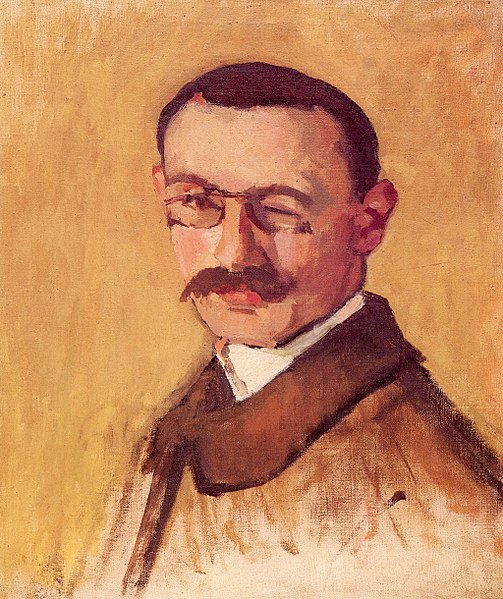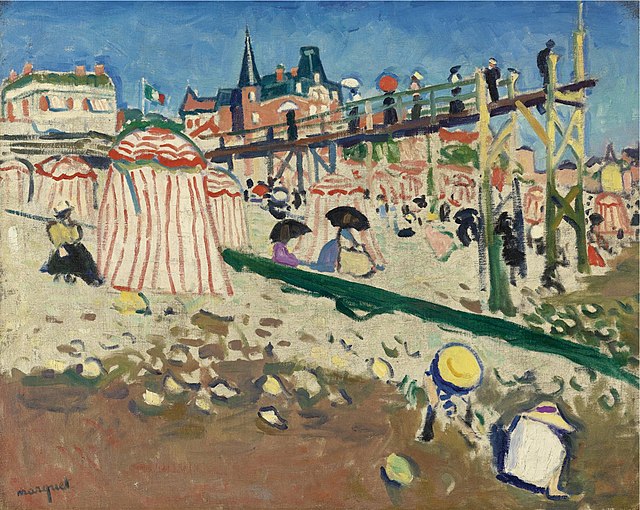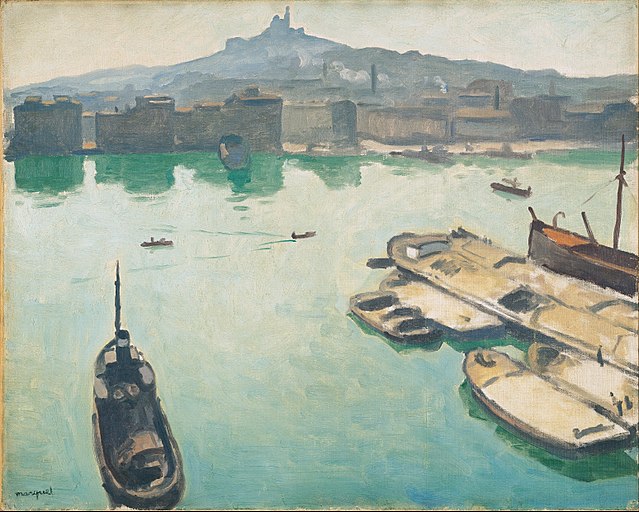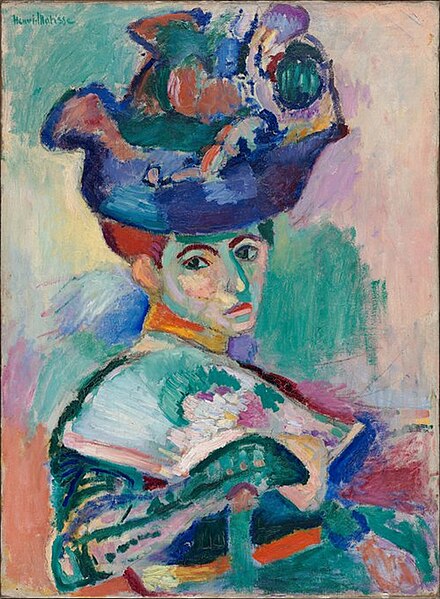Albert Marquet was a French painter. He initially became one of the Fauve painters and a lifelong friend of Henri Matisse. Marquet subsequently painted in a more naturalistic style, primarily landscapes, but also several portraits and, between 1910 and 1914, several female nude paintings.
Self-portrait, 1904
Marquet, 1906, Fécamp (The Beach at Sainte-Adresse), oil on canvas, 64.5 x 80 cm
Marquet, 1916, Port of Marseilles, oil on canvas, 65 x 81 cm, Ohara Museum of Art
Albert Marquet, 1919, La femme blonde (Femme blonde sur un fond de châle espagnol), oil on canvas, 98.5 x 98.5 cm, Musée National d'Art Moderne, Centre Georges Pompidou, Paris
Fauvism is a style of painting and an art movement that emerged in France at the beginning of the 20th century. It was the style of les Fauves, a group of modern artists whose works emphasized painterly qualities and strong colour over the representational or realistic values retained by Impressionism. While Fauvism as a style began around 1904 and continued beyond 1910, the movement as such lasted only a few years, 1905–1908, and had three exhibitions. The leaders of the movement were André Derain and Henri Matisse.
Henri Matisse. Woman with a Hat, 1905. San Francisco Museum of Modern Art
Henri Matisse, Luxe, Calme et Volupté, 1904, oil on canvas, 98 × 118.5 cm, Musée d'Orsay, Paris, France
Henri Rousseau, The Hungry Lion Throws Itself on the Antelope, 1905, oil on canvas, 200 cm × 301 cm, Beyeler Foundation, Basel
Henri Matisse, Le bonheur de vivre, 1905–06, oil on canvas, 176.5 cm × 240.7 cm, Barnes Foundation, Philadelphia, Pennsylvania








